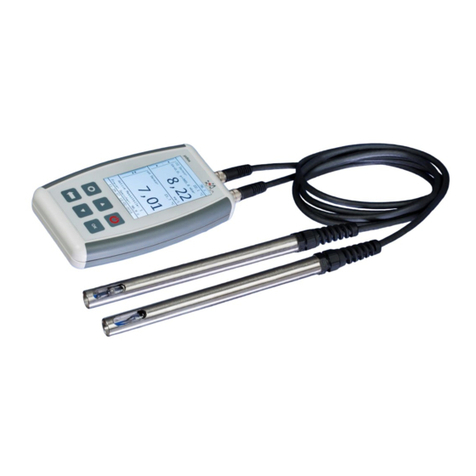
3
Index
1. Manufacturer................................................................................................................5
2. Correct usage in accordance with regulations..............................................................5
3. Warranty.......................................................................................................................5
4. Liability........................................................................................................................5
5. Terms of license...........................................................................................................6
6. General safety instructions...........................................................................................6
6.1 Symbols........................................................................................................................6
6.2 Operating personnel.....................................................................................................6
6.3 Safety requirements......................................................................................................7
7. General overview of the device ...................................................................................8
8. Characteristics..............................................................................................................9
9. Installation..................................................................................................................10
9.1 Mechanical installation ..............................................................................................10
9.2 Hydraulic installation.................................................................................................10
9.2.1 Scheme hydraulic installation....................................................................................11
9.3 Electrical installation..................................................................................................12
9.3.1 Connection of power supply ......................................................................................12
9.3.2 Output water hardness by active current loop............................................................12
9.3.3 Connection ON / OFF signal .....................................................................................12
9.3.4 External signalling by potential free contact..............................................................13
9.3.5 Connection external closer for activation of measurement........................................14
9.3.6 Connection of water meter.........................................................................................14
9.3.6.1 Connection mechanical water meter..........................................................................14
9.3.6.2 Connection electronic water meter (turbine with Hall-contacts)...............................14
9.3.7 Overview electrical connections................................................................................15
10. Commissioning ..........................................................................................................16
10.1 Setting of DIP-Switches.............................................................................................16
10.2 Explanation of LED-Display .....................................................................................18
10.2.1 Explanation of LED-status for displaying of water hardness evaluation...................18
10.2.2 Explanation of LED-status for displaying of functional status..................................19
10.3 Operating tests............................................................................................................20
10.3.1 Test of water quality ..................................................................................................20
10.3.2 Test of external signaling...........................................................................................20
10.3.3 Test sensor performance ............................................................................................20
11. Service........................................................................................................................21
11.1 Delivery/Transport/Storage of hardness sensor.........................................................21
11.2 Operating conditions of the sensor.............................................................................22
11.3 Sensor mounting/Sensor replacement........................................................................22
11.4 Malfunction/Breakdown of sensor.............................................................................23
12. Malfunctions and possible causes..............................................................................24
13. Decommissioning.......................................................................................................25
14. Dismounting...............................................................................................................25
15. Sensor system.............................................................................................................25
16. Accessories.................................................................................................................25
17. Technical data ............................................................................................................26
18. EU-Declaration of conformity ...................................................................................27




























